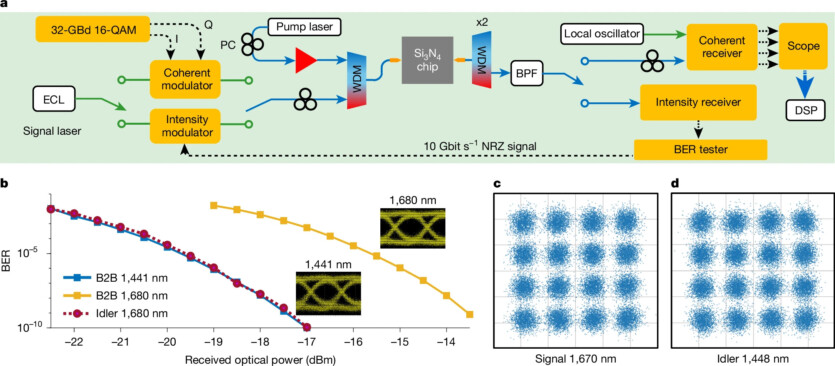
Researchers at Chalmers University of Technology in Sweden have developed a tiny amplifier that can be placed on a chip and speed up data transfer 10 times faster than traditional fiber-optic networks.
According to the developers, their device has significant potential in use for a variety of laser systems, including those used in diagnostics and treatment. Optical amplifiers are used to ensure efficient data transmission and eliminate interference. Researchers have found that the bandwidth of an optical system mainly depends on the wavelength range of light transmitted through the amplifier.
«Amplifiers currently used in optical communication systems have a bandwidth of about 30 nanometers. However, our amplifier boasts a bandwidth of 300 nanometers, allowing it to transmit ten times more data per second than existing systems», — explains Peter Andrekson, professor of photonics at Chalmers University and lead author of the study.
The new amplifier is made of silicon nitride and has several small spiral, interconnected waveguides that minimize light scattering. The technical advantages were achieved by combining the required geometric shape with a silicon nitride structure.

As noted by Peter Andrekson, a key advantage of the new amplifier is its ability to increase the light transmission bandwidth by 10 times, while effectively reducing the associated interference. This makes it possible to amplify very weak signals and those used for communication systems in space.
It is also claimed that the development of Chalmers researchers can be used to develop laser systems capable of rapidly changing wavelengths over a wide range, as optical amplifiers are the most important components of all lasers. Andrekson noted that minor changes in the design would also allow for the amplification of visible and infrared light.
The amplifier can be used in laser medical diagnostic systems, as the wide bandwidth allows for more accurate analysis and visualization of tissues and organs, which can help detect diseases at earlier stages with greater accuracy.
A methodology is presented for fabricating nonlinear waveguides with simultaneous single-mode operation and anomalous dispersion for ultra-wideband operation and highly efficient four-wave mixing. While the researchers showed that they realized this in silicon nitride waveguides, the design approach can be used with other platforms as well.
The results of the study are presented in the journal Nature
Source: Enteresting Engineering

Spelling error report
The following text will be sent to our editors: